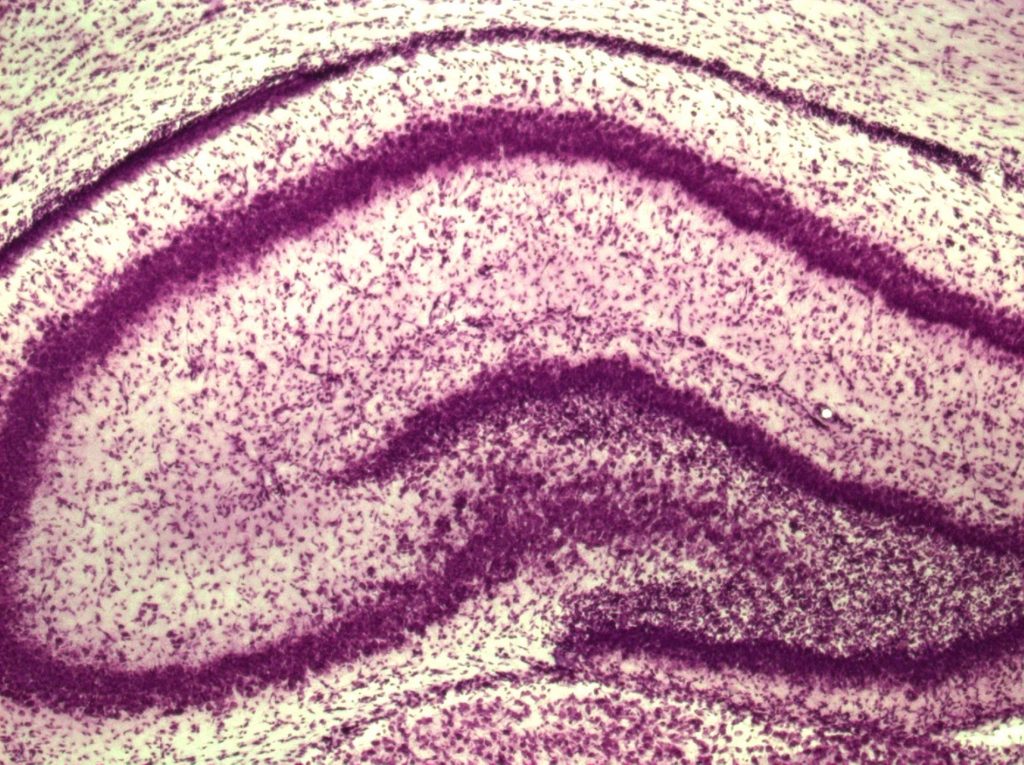| Submitted by: | Anna Kalisvaart |
| Department: | Psychology |
| Faculty: | Science |
Every minute that a stroke patient goes without medical care results in the death of millions of brain cells, causing irreparable loss of function. Given the devastating brain injury caused by stroke, it isn’t surprising that it is the number one cause of adult disability in Canada. Therefore, clinicians and stroke researchers alike have coined the adage “Time is Brain” to encourage patients experiencing stroke symptoms to seek medical attention immediately. As a preclinical stroke researcher, my research ultimately aims to protect structure in the brain called the hippocampus, which is the seat of learning and memory. When this structure is damaged, it can result in the inability to form or recall memories- a devastating loss of identity. In this image, a hippocampus, reminiscent of the hands on a surrealist clock, is shown in cross section and stained so that each individual brain cell that constitutes this structure is visible. Salvador Dali, the famous surrealist artist who painted the piece ‘The Disintegration of Persistence of Memory’ once said that “Man cannot change or escape his time.” However, the goal of modern preclinical stroke research is to both improve and extend the life of stroke patients, maintaining the persistence of memory.

